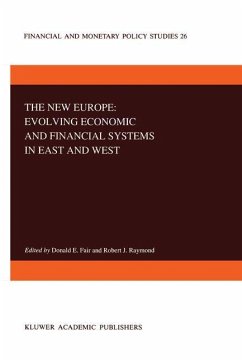
Integrating Eastern Europe into the Global Economy:
Convertibility through a Payments Union
Versandkostenfrei!
Versandfertig in 1-2 Wochen
77,99 €
inkl. MwSt.
Weitere Ausgaben:

PAYBACK Punkte
39 °P sammeln!
This book is designed as a modest contribution to the ongoing deliberations about how to ease the fairly tight constraints on the external payments of many countries of the eastern part of Europe. In the fIrst instance, this inquiry is addressed to those that have embarked on wide-ranging systemwide reforms. External constraints have been markedly hampering the introduction of market oriented economic mutations, thereby raising the cost of transition far above levels expected at the outset of the present wave of uniquely restructuring the countries involved. I explore here several angles of th...
This book is designed as a modest contribution to the ongoing deliberations about how to ease the fairly tight constraints on the external payments of many countries of the eastern part of Europe. In the fIrst instance, this inquiry is addressed to those that have embarked on wide-ranging systemwide reforms. External constraints have been markedly hampering the introduction of market oriented economic mutations, thereby raising the cost of transition far above levels expected at the outset of the present wave of uniquely restructuring the countries involved. I explore here several angles of this discussion. But three stand out. One is the disintegration of the postwar framework for economic cooperation in that part of the world. Another is the disarray brought about by incisive economic transformations in the area. Finally, various national, regional, and international interest groups are at work there, hoping to mold somehow the drift of the reform, or at least key components thereof, in their own "image. " In the process it is often forgotten, as Ralf Dahrendorf (1990, p. 41) so pointedly remarked that "[ a]ll systems mean serfdom, including the . natural' system of a total . market order' in which no one tries to do anything other than guard certain rules of the game discovered by a mysterious sect of economic advisers.














